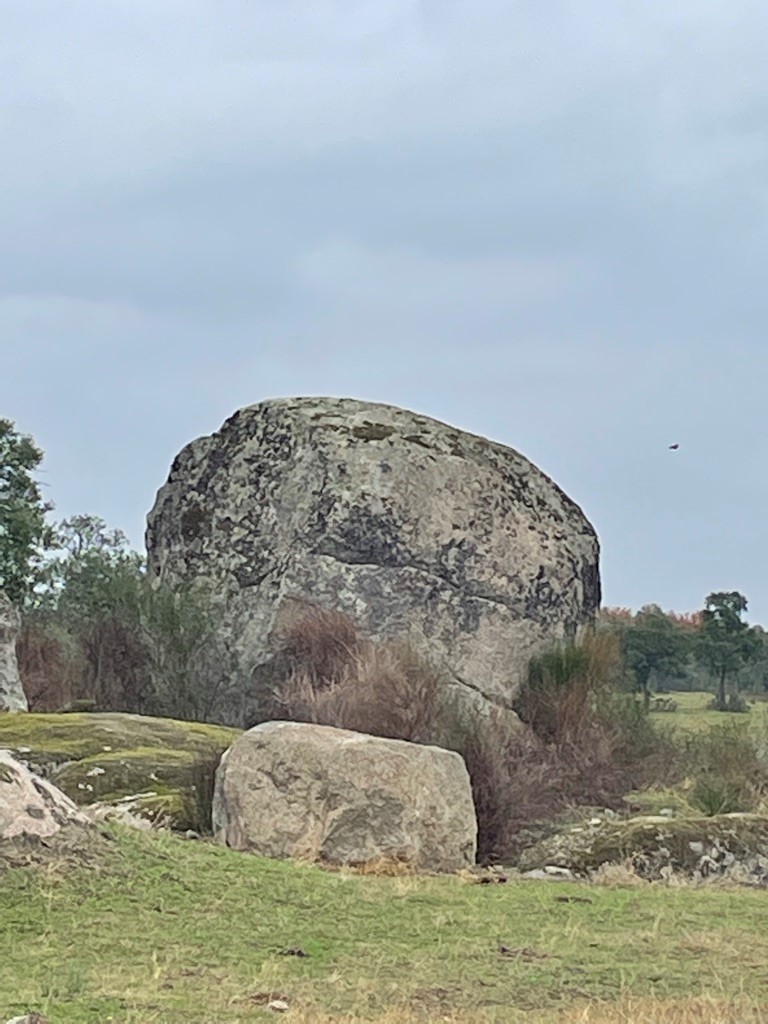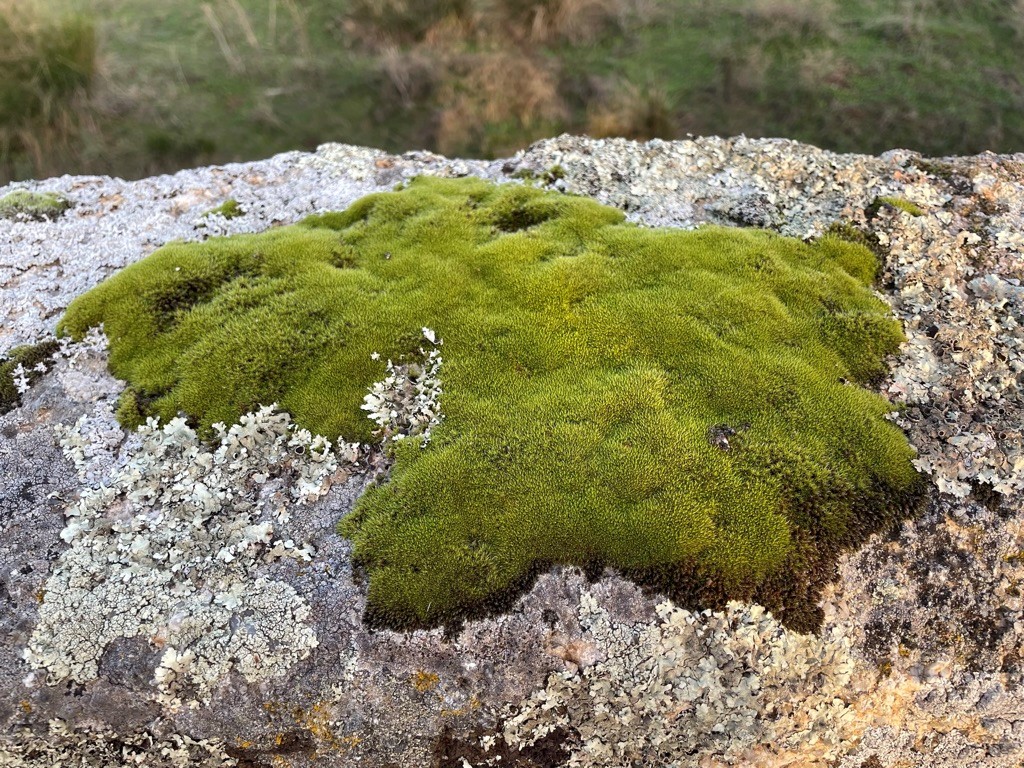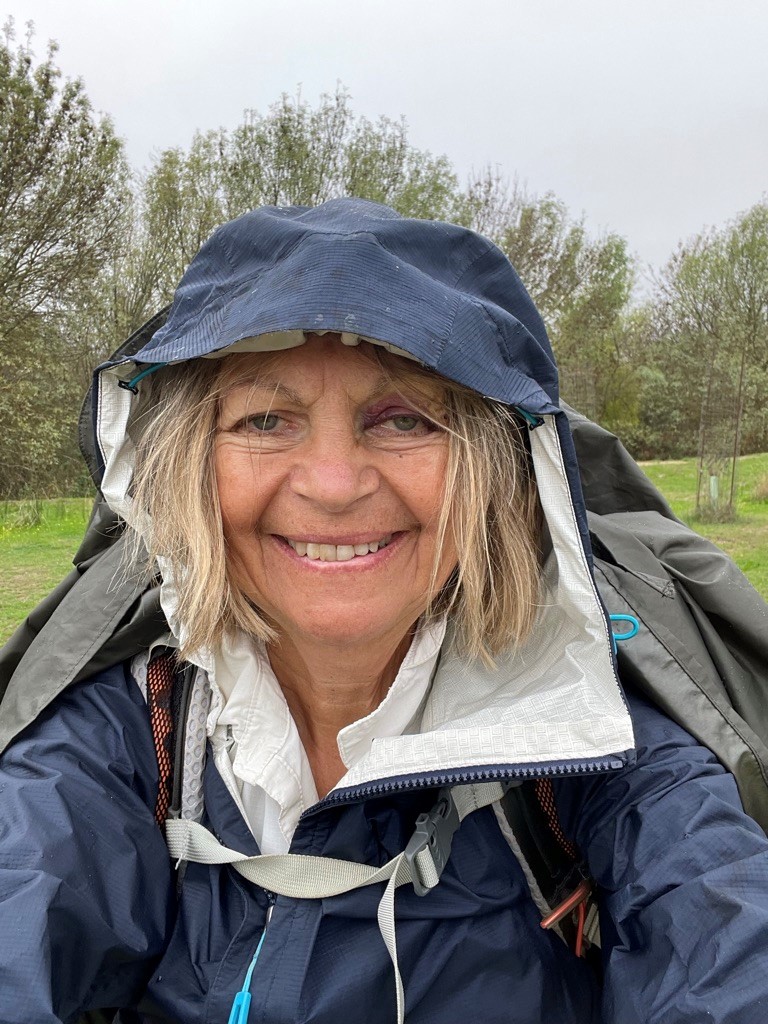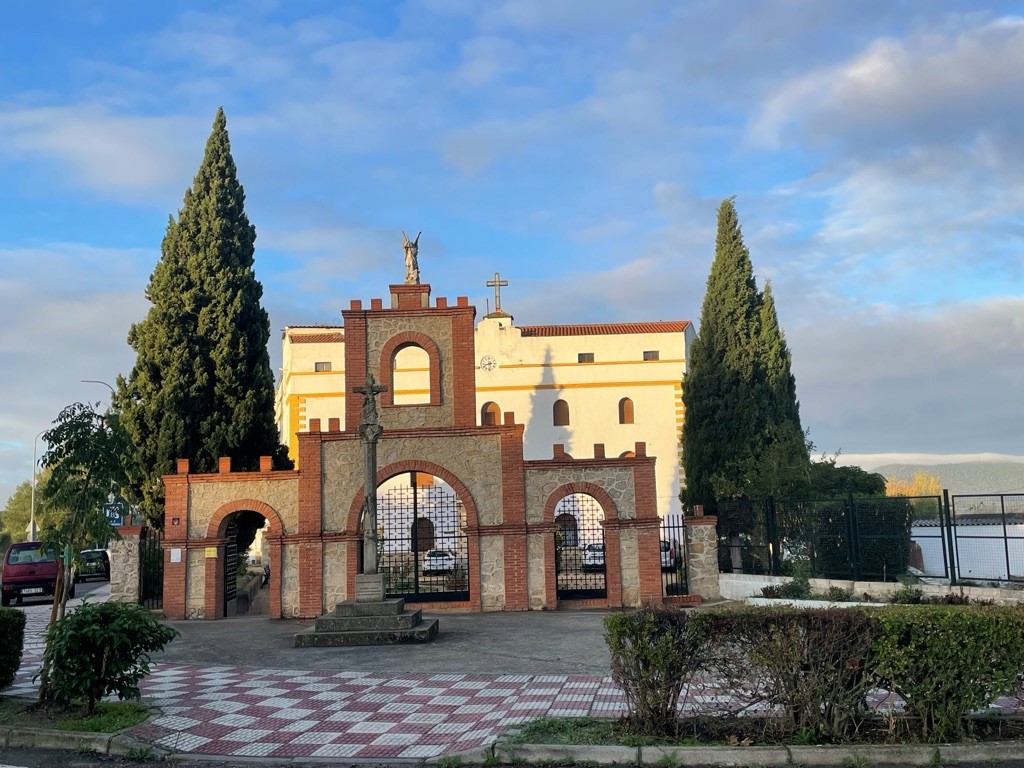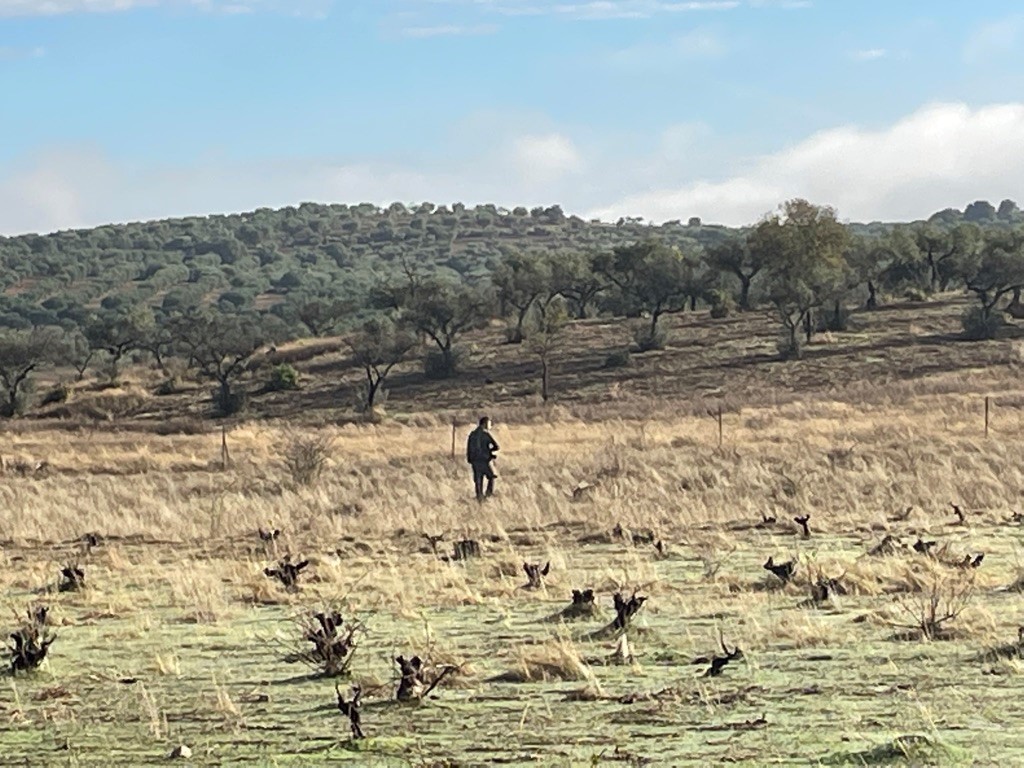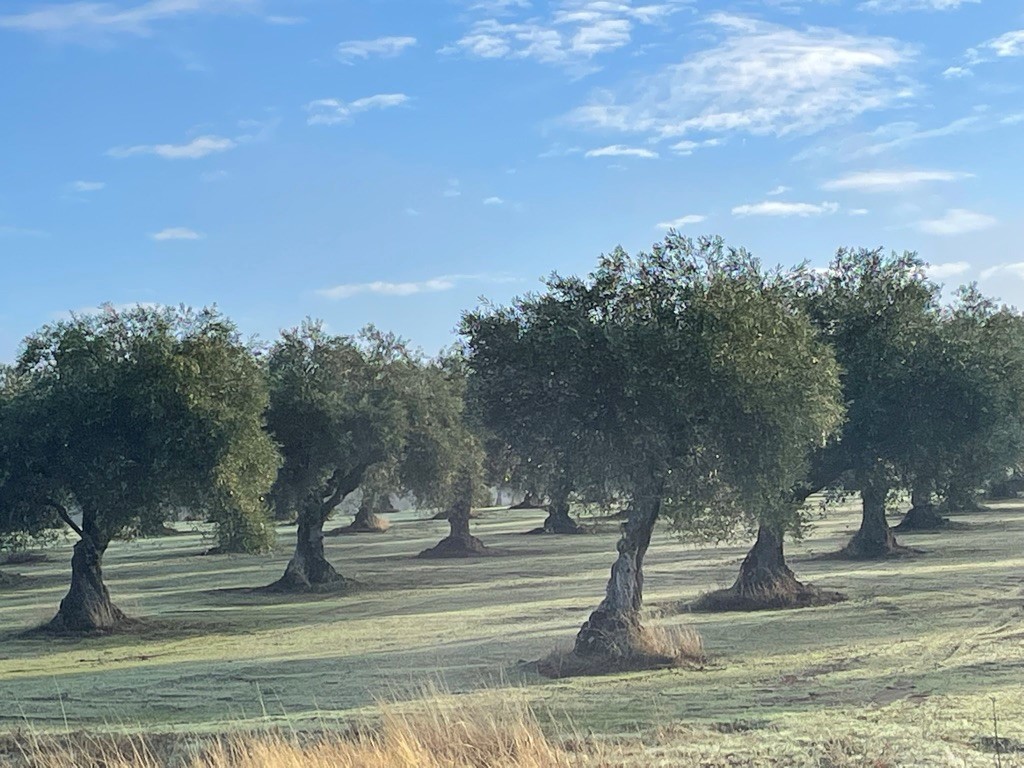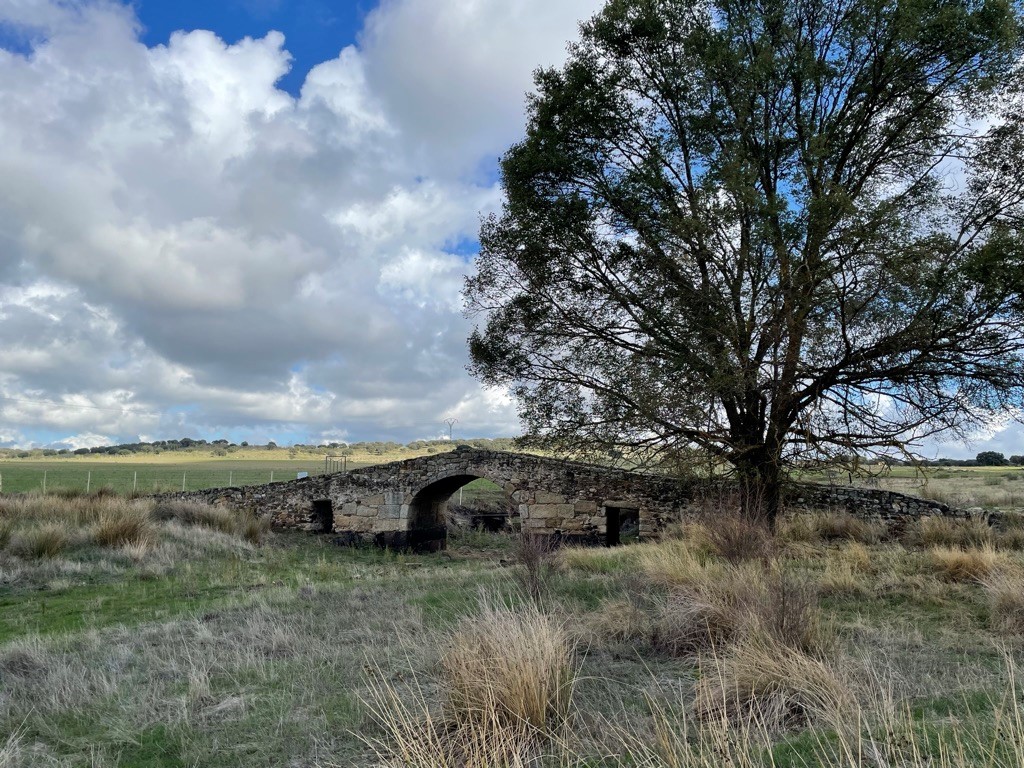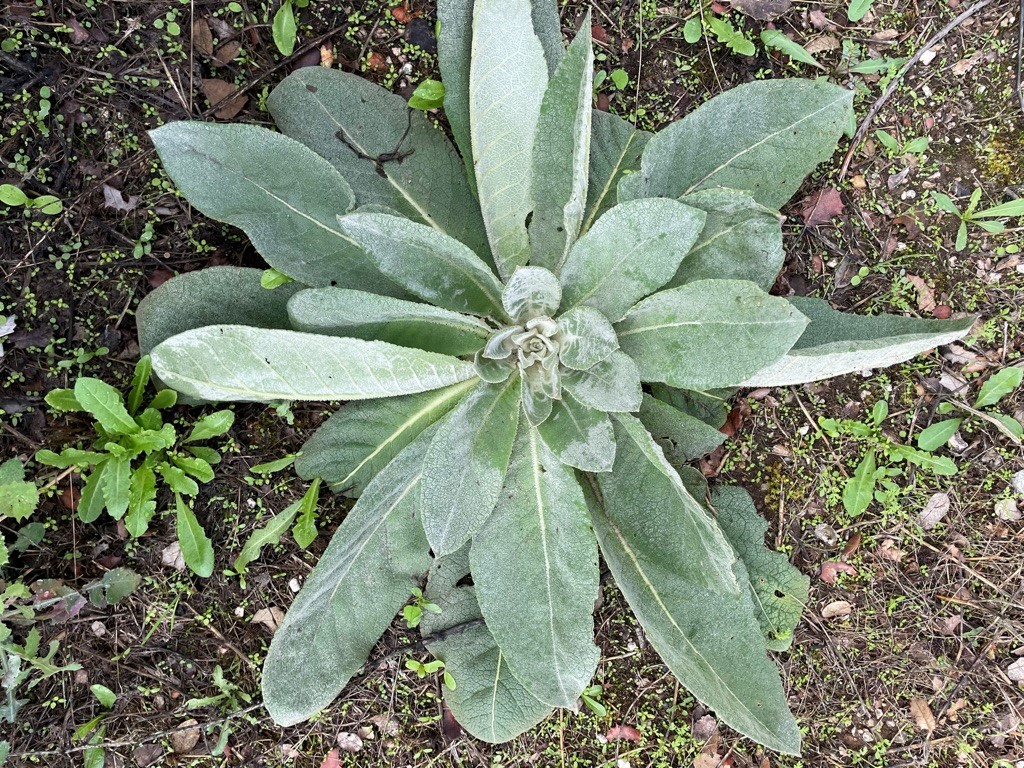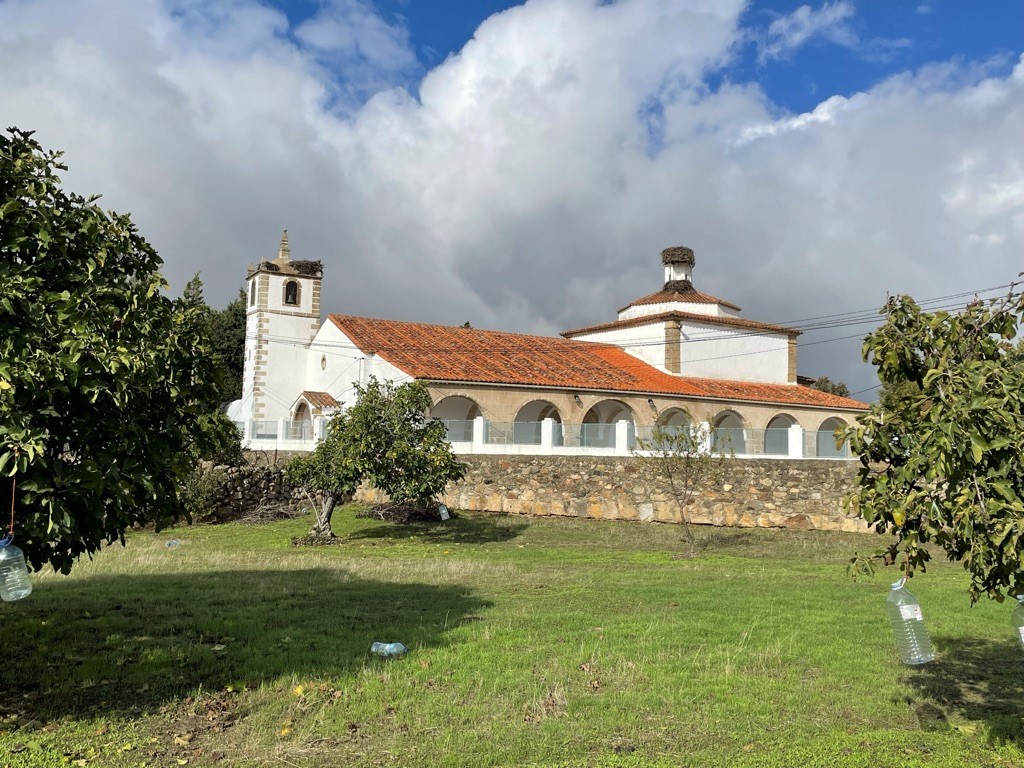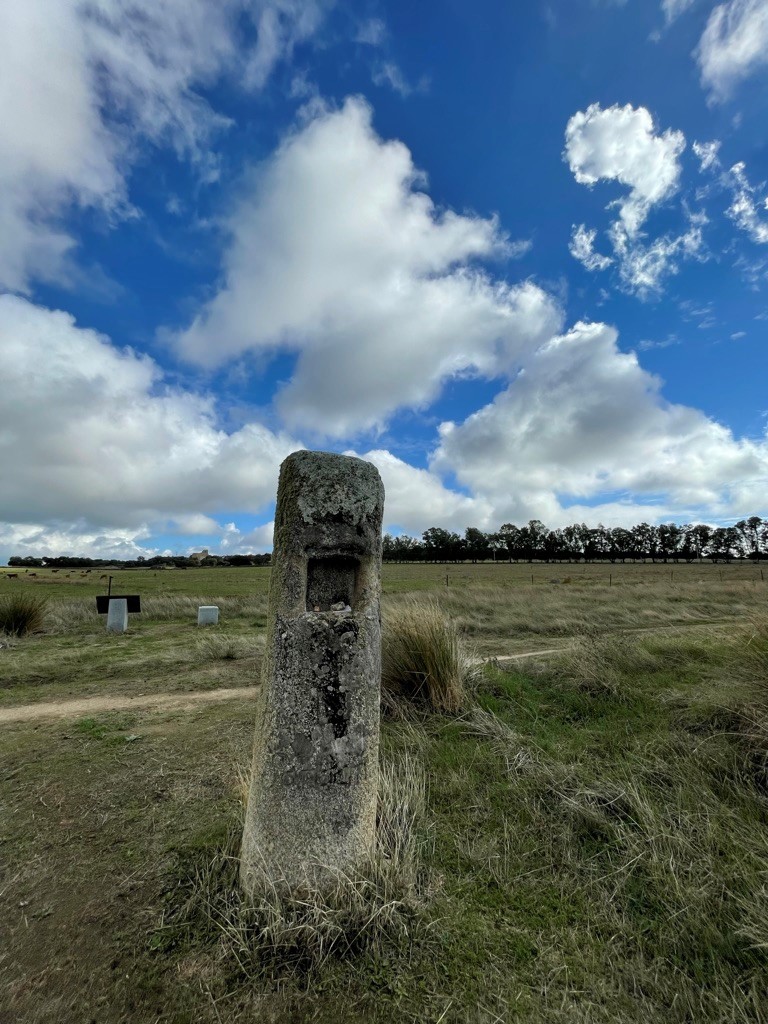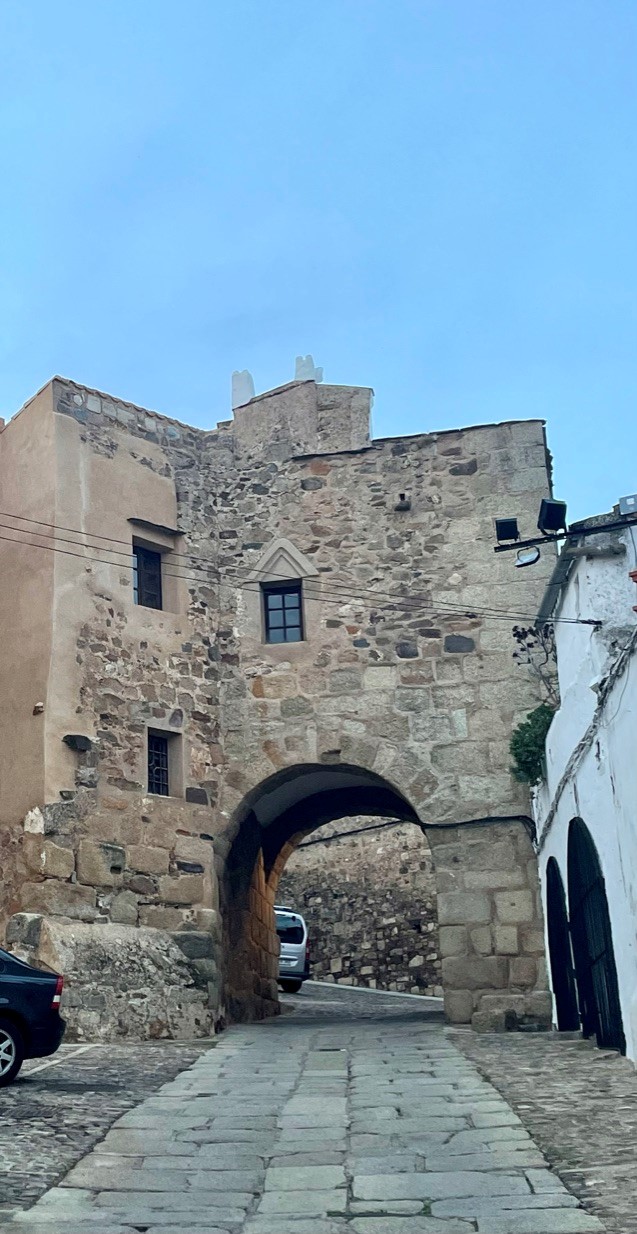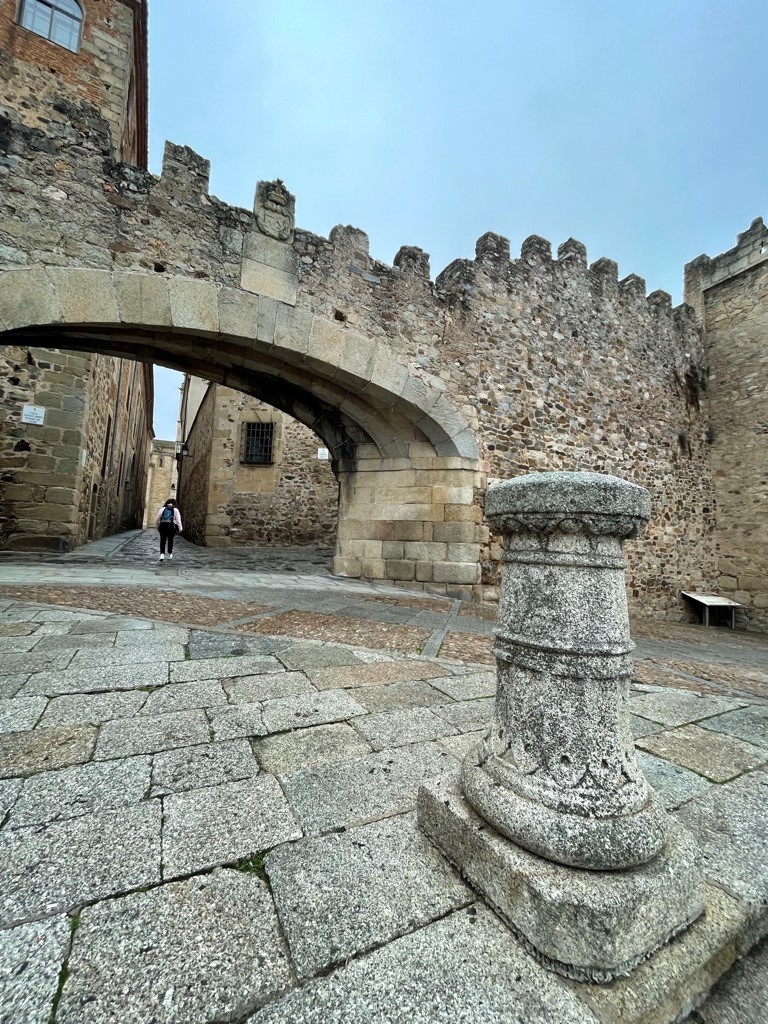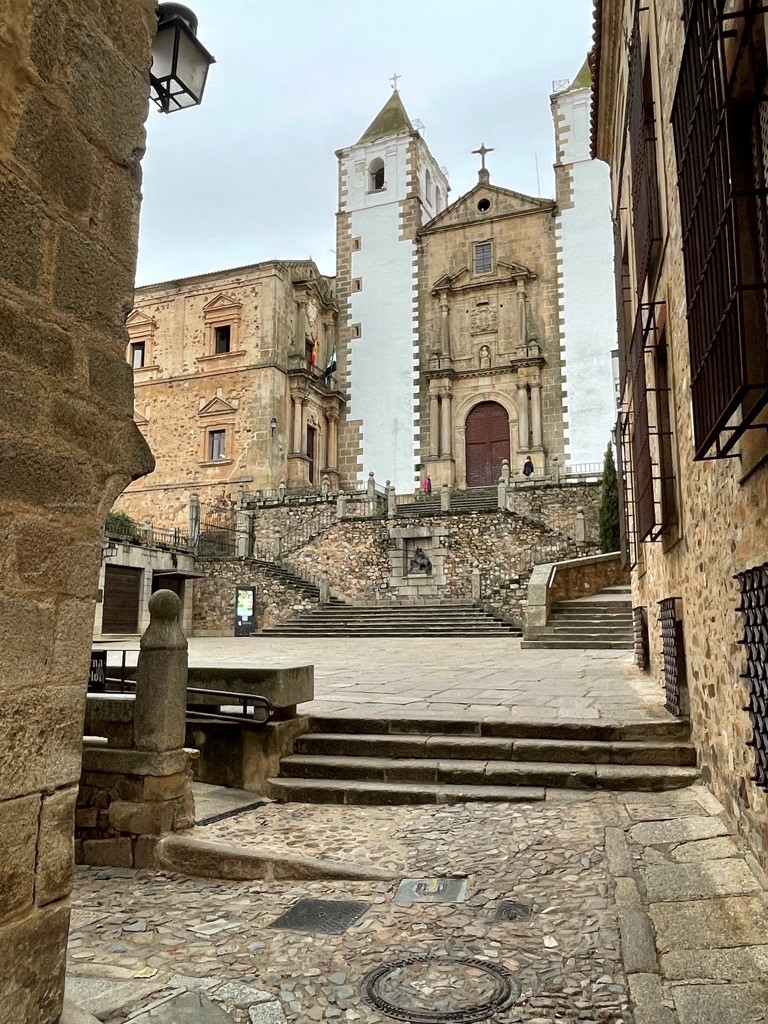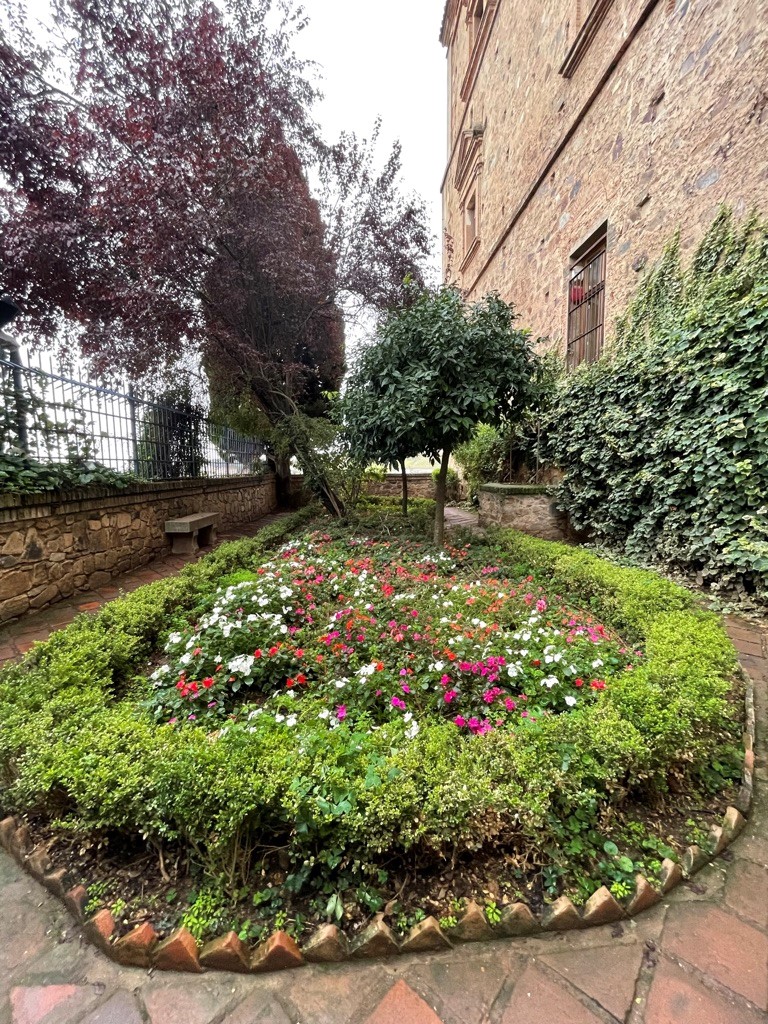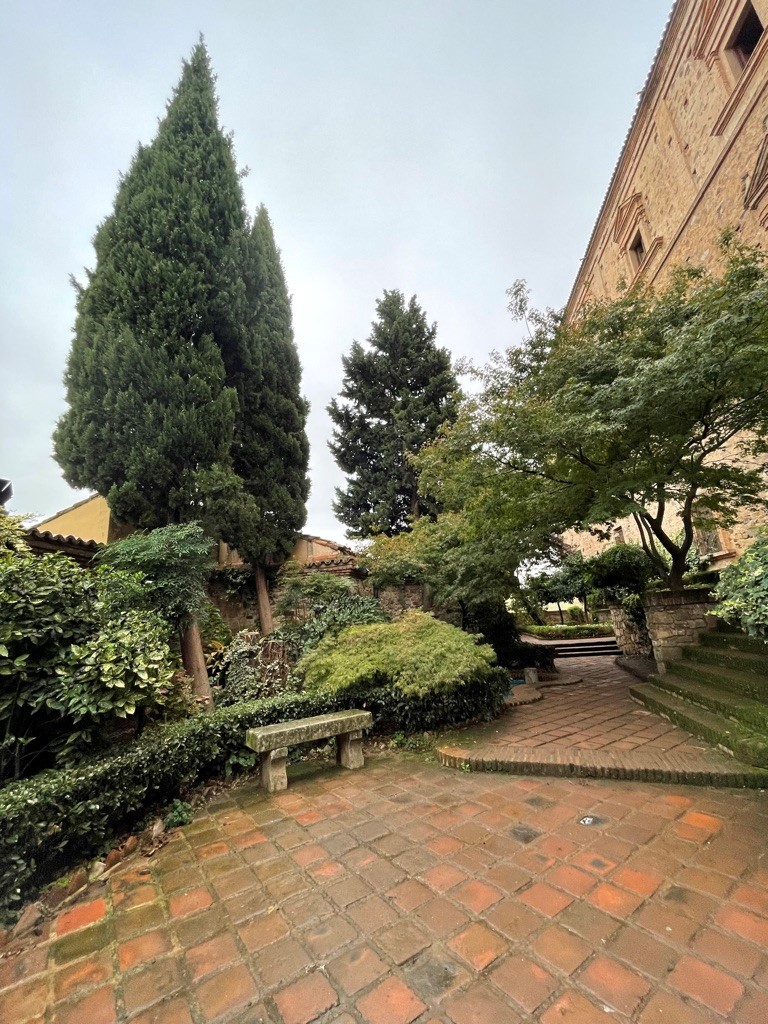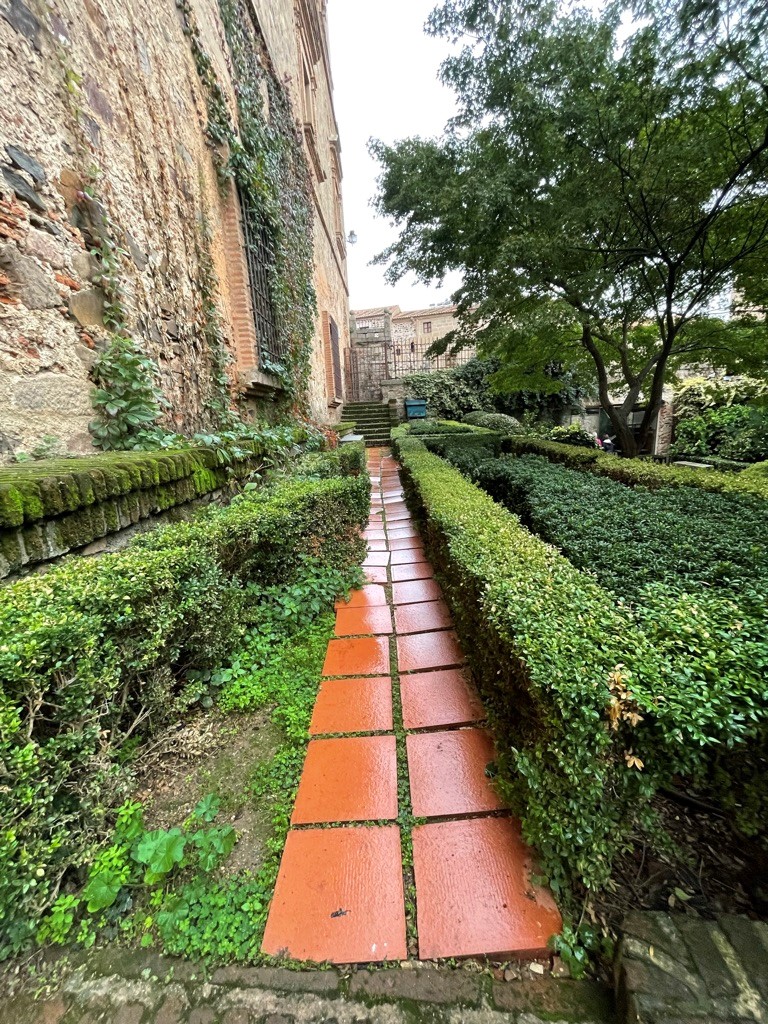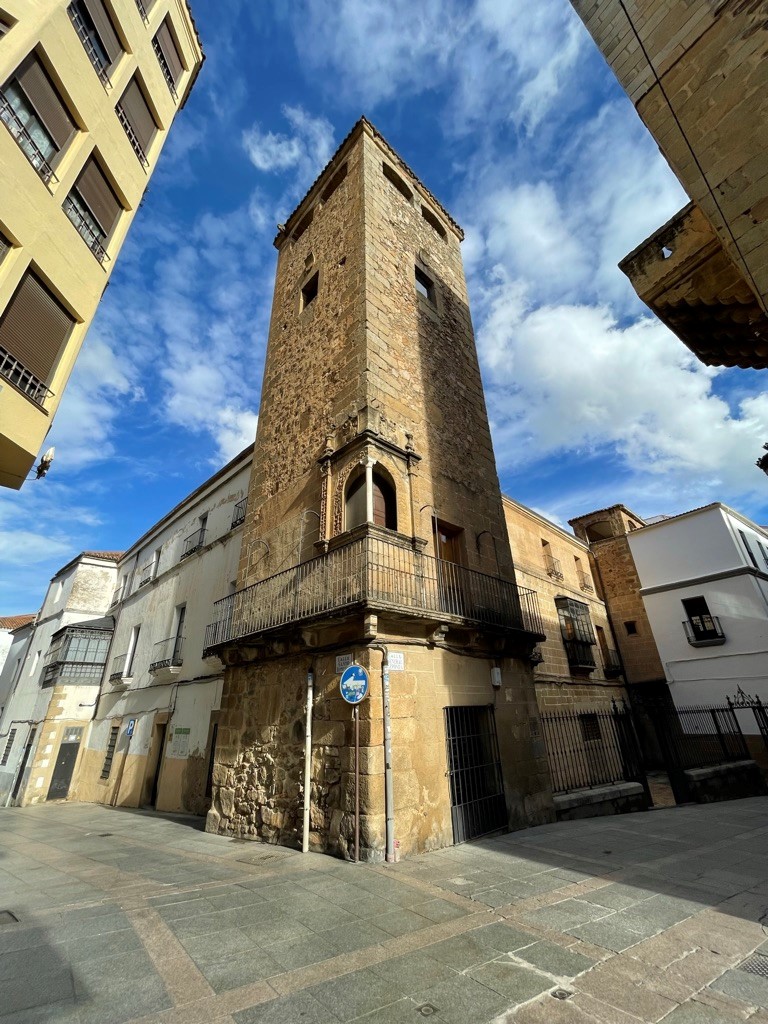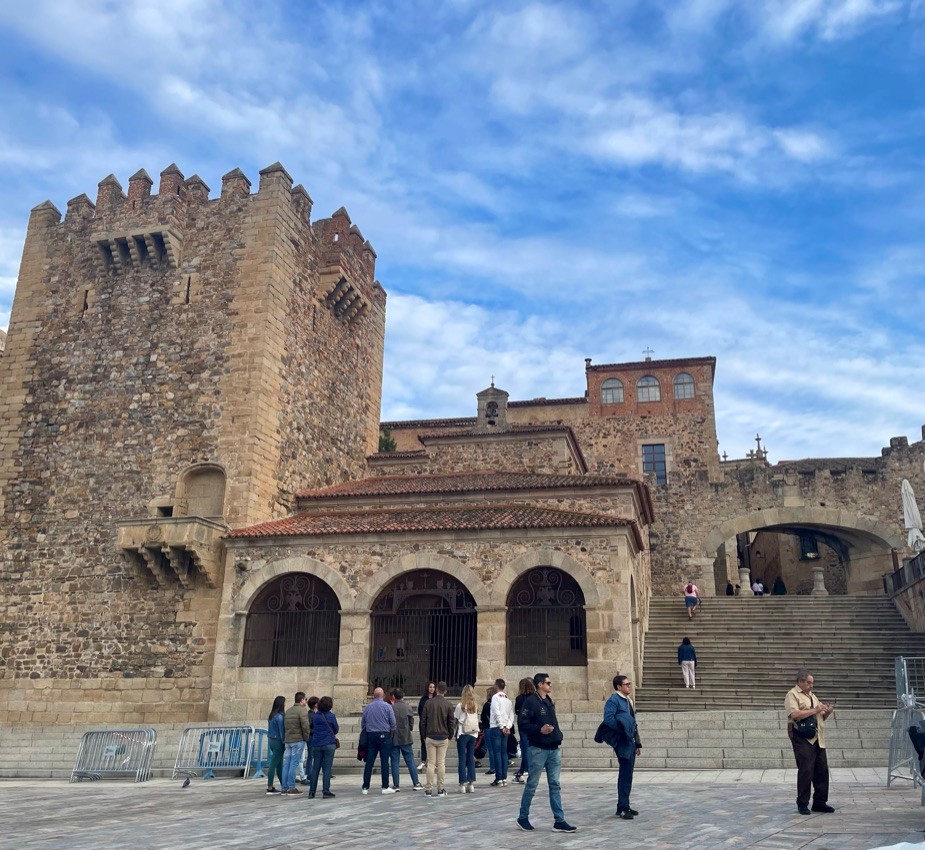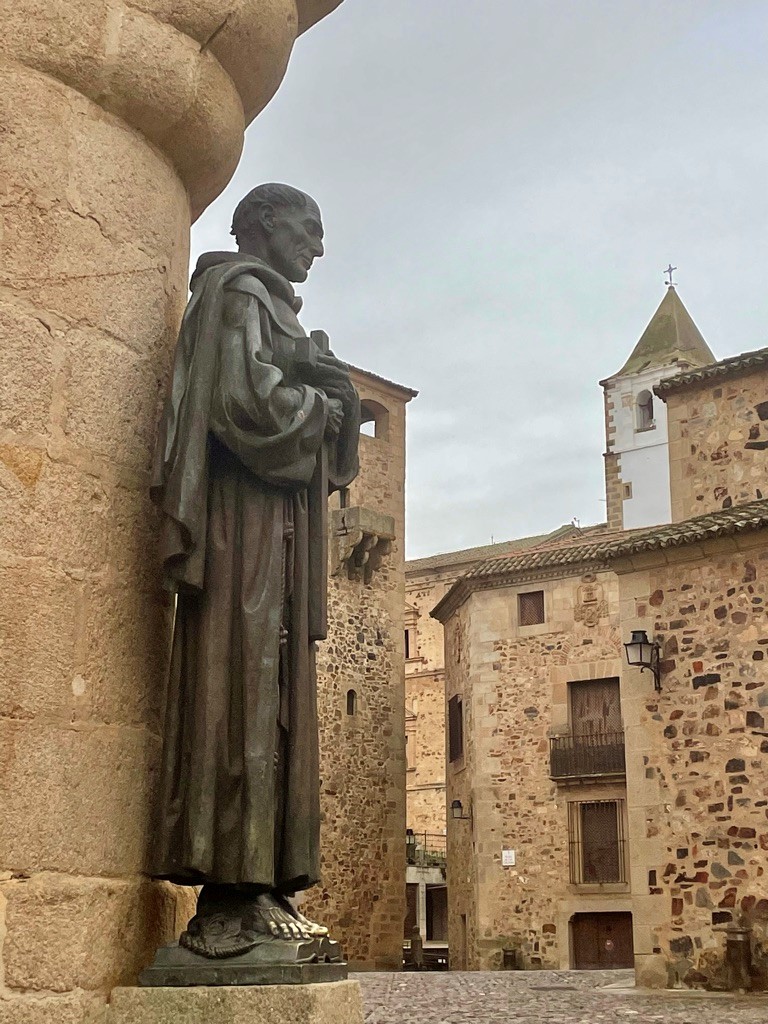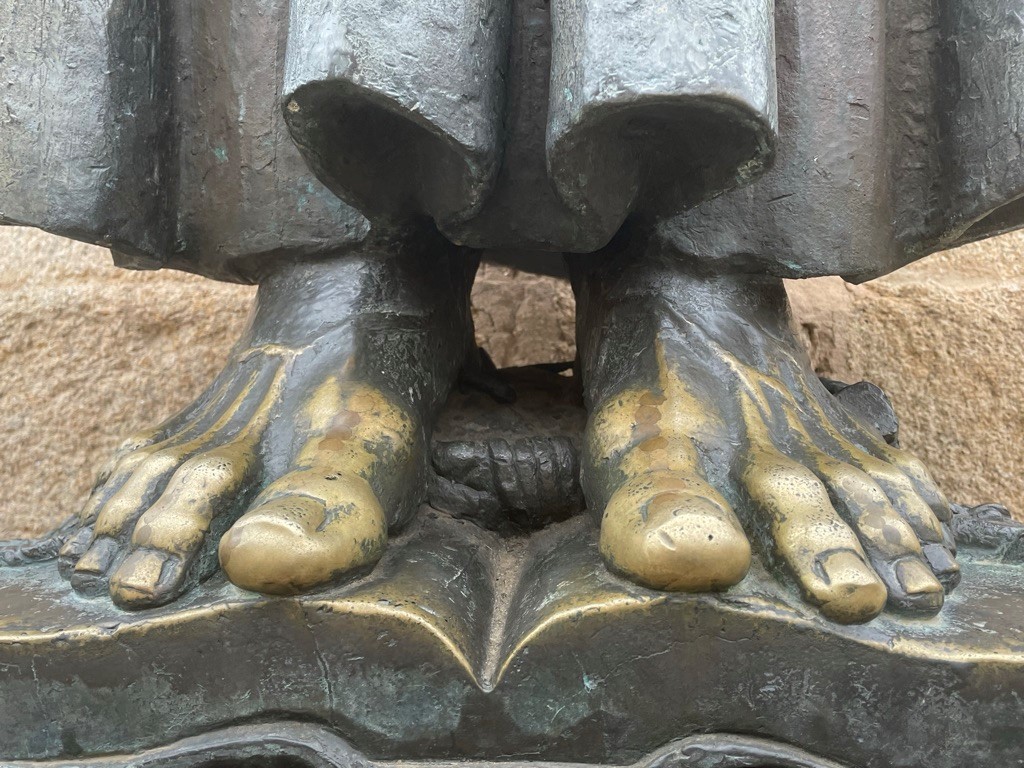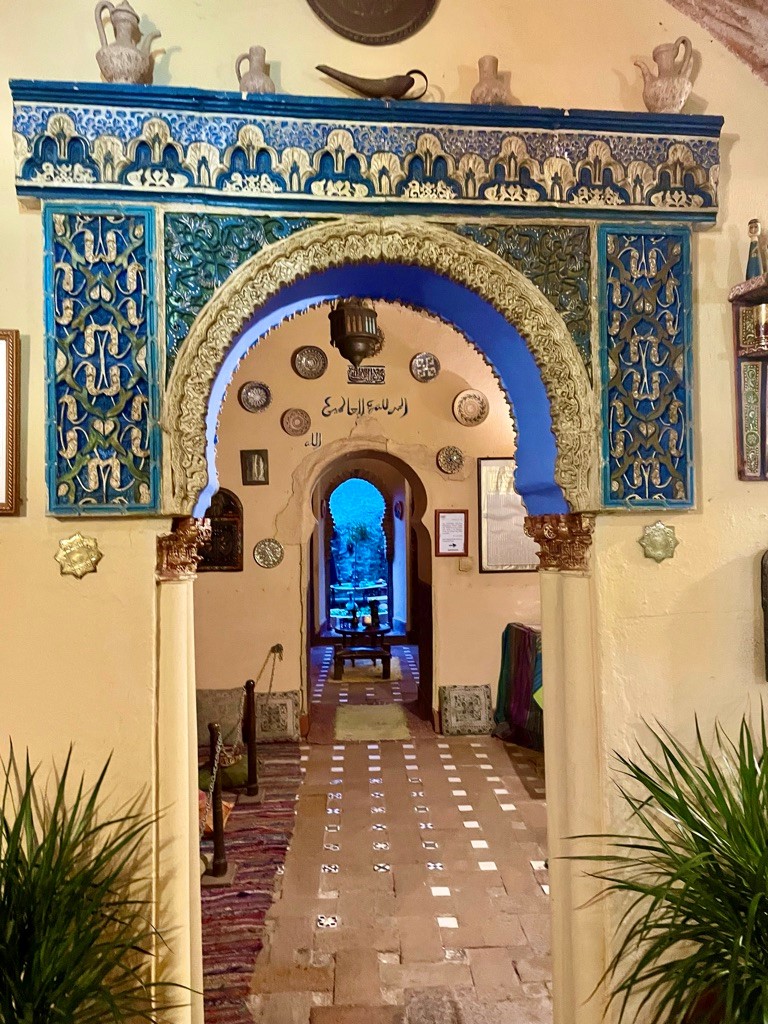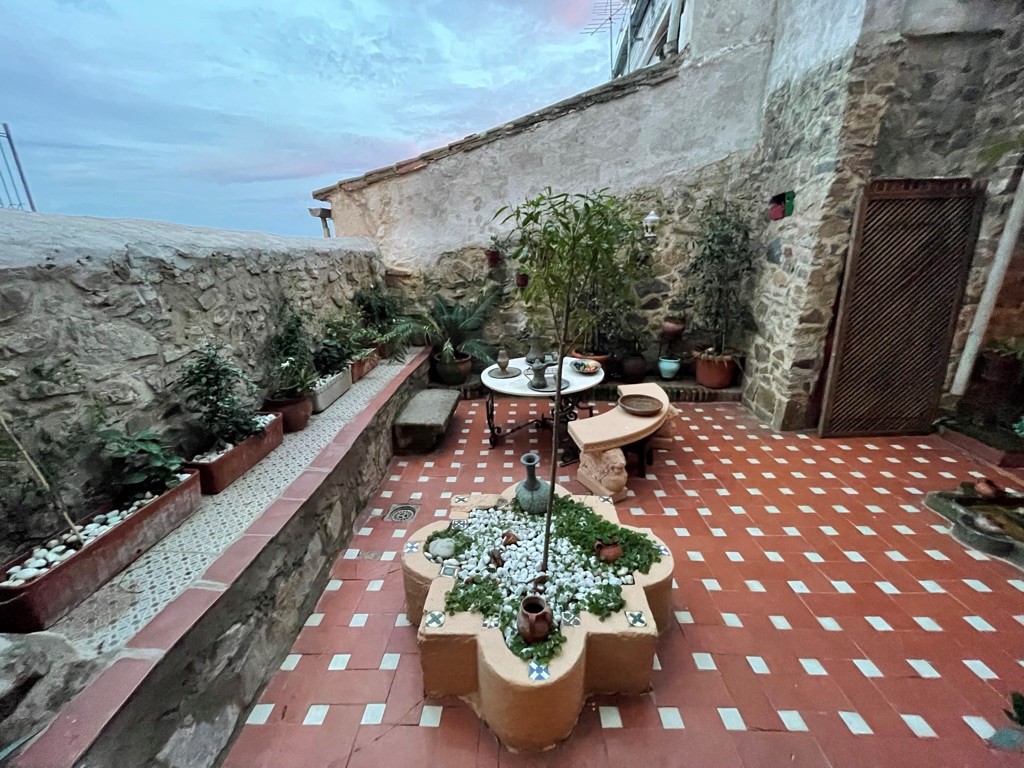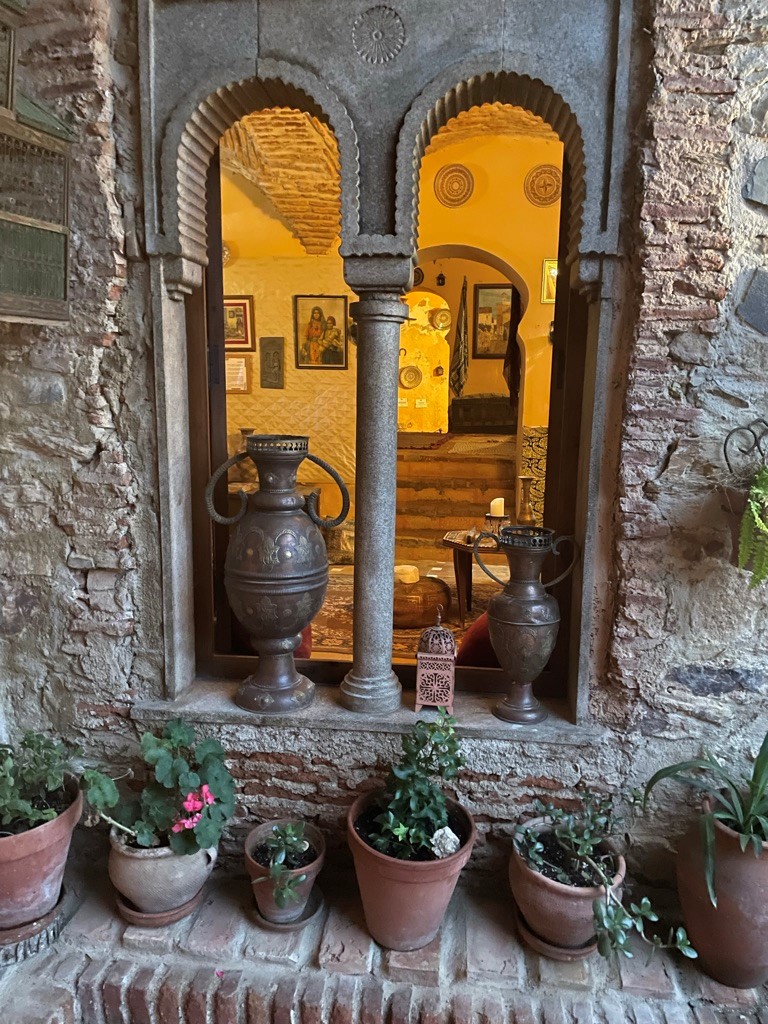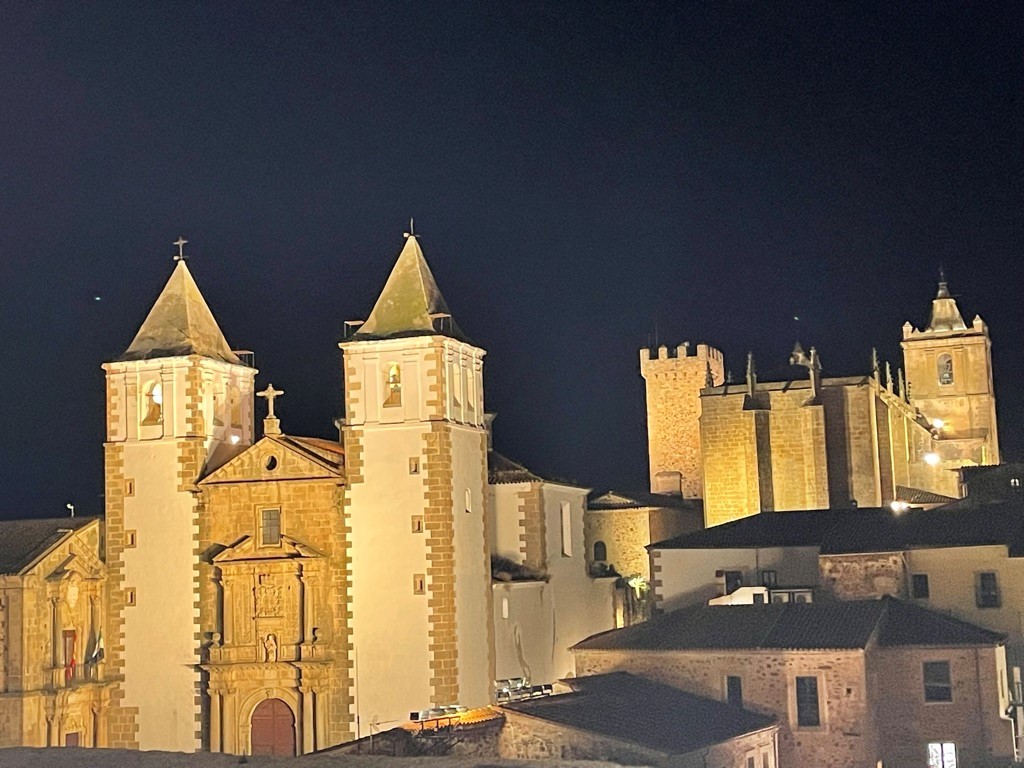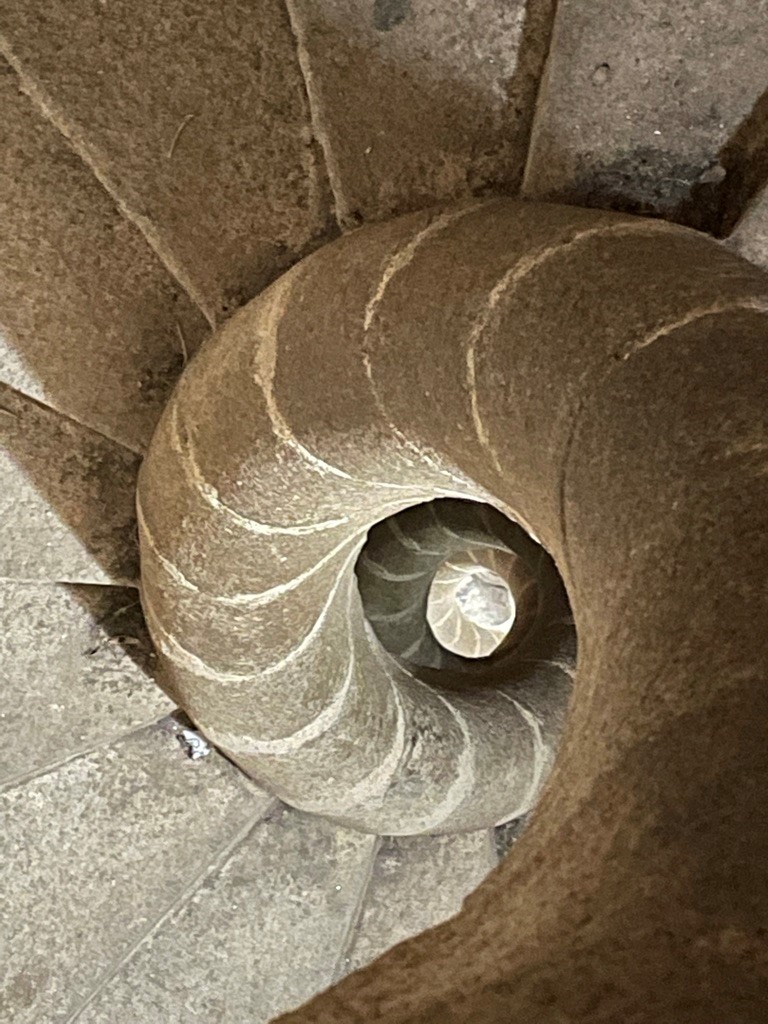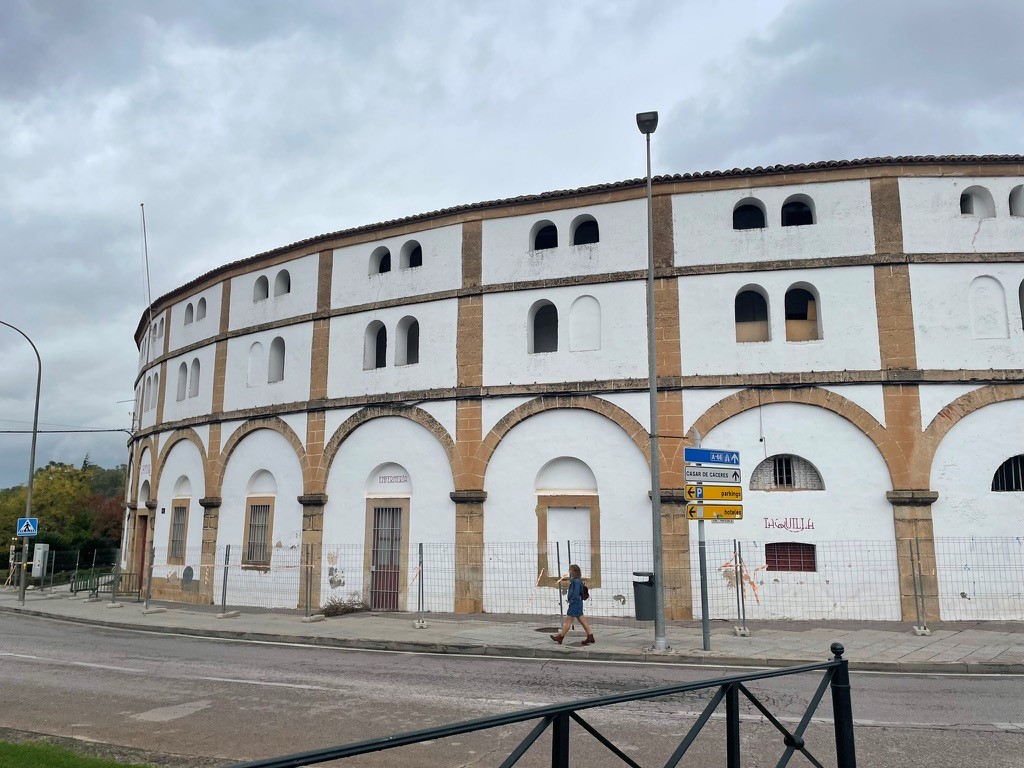.
My way to Cacarés
After leaving the village Alcucén for the next village, I walked through the gorgeous nature preserve “Cornalvo” with meadows, oaks, mosses and giant boulders. It is famous for its variety of birds.
Almost the entire day it was raining. Wild thyme, eucalyptus trees and the rock cistus with its sticky leaves were so generously distributing their fragrance, that I did not mind the “bad weather”. However, both of my feet were quite swollen and hurting.
.
.
.
.
Rock cistus
.
.
.
.
.
.
.
In love with the moss
.
.
.
.
I wore two layers of rain protection – a rain coat and a rain cape, also protecting my backpack. The sentence I was walking with this day was “the fire boy is seeking fire” – it was fascinating that the element of fire in my mental world balanced with the rain in the physical world.
.
.
.
.
Casa de Acogida de los Esclavos de Maria y los Pobres
.
I decided to stay in the monastery “Casa de Acogida de los Esclavos de Maria y los Pobres” (Slaves of Mary and the Poor). It was the first and only monastery I stayed in during this pilgrimage. When I arrived, I met the Italien cook Lorenzo again. His first words were “what happened to your eye?” His spontaneous reaction was refreshing! Nobody else had asked about my purple eyelid! He also told me about a phone call the hospitaliero got from the albergue in Mérida warning about a thief. I knew what he was talking about.
At 6:15pm there was a mass scheduled in the house nearby and I decided to attend. I met Lorenzo in the hallway speaking with three young monks. For the last several days, I carried the wishes for the wellbeing of my daughter-in-law and her unborn baby with me, “praying” for her health during delivery. I asked Lorenzo to ask the three monks to pray for her health during mass. Ten days later, my daughter-in-law had fully recovered from covid and delivered a healthy baby boy. I became a grandmother again.
At the church service, the room was full of old men, some in wheelchairs, some talking with themselves, some with a walker or cane, looking depressed. It was a retirement home for men who did not have anybody to care for them at home. The priest, cold and detached, was doing his job and I thought – when one is a “slave” (Slave of Mary and the Poor), it does not leave room for warm, heartfelt connections. I felt compassion for these men.
Beside Lorenzo, also Anja and Trudi (two Dutch women) stayed in the monastery. I was assigned a single room and was very thankful for that. My feet were swollen and the bottoms burning like fire. I gave them a long massage, rest by holding them upwards to reduce the swelling and took a pain pill to be able to sleep.
After I had breakfast with Trudi and Anja the next morning, I continued my walk and heard, like so often during my pilgrimage, distant shooting; it was hunting season
.
.
.
.
On the Camino
still hunters and gatherers
this Thursday morning
.
.
.
.
.
.
.
.
.
.
.
.
.
Puente de Santiago, a Roman bridge modified during the middle ages
.
.
.
.
A beautiful building with several stork nests on its top – Erimita de la Virgin del Pilar (15th century) at the end of the village “Casas de Don Antonio
For a long time, I followed the former Roman road with “milarios” at the side of the street. Milarios are Roman granite columns marking a Roman mile (1480m).
.
.
.
.
The Roman milestone with a niche called Millario correo (milestone of the postman) was used more recently as a post office box. I put my sentence of the day, “to find your path within restrictions, this is the way of practice”, into the niche. This sentence resonated with me very much. Maybe it is also a sentence another pilgrim might find helpful.
.
.
.
.
Several miles before the town of Carcarés, I heard a rustle and flapping of wings in the sky. When I looked up, I saw 10-12 vultures floating above me.
By entering the town Carcarés (based on the veneration of the Roman fertility goddess Ceres), I decided not to follow my navigator nor the yellow arrow, but to take a shortcut to to reach my accommodation close to the center of town – a big mistake. The streets in the outskirts of the town were confusing and very ugly and I needed much longer than I had expected. But I still had the afternoon and evening to look around and was intrigued by its beauty.
The old city, surrounded by a city wall and five gates (12th century), is a treasure of Medieval and Renaissance architecture.
.
.
.
.
Arco del Cristo (3rd century), the gate where pilgrims enter the town
.
.
.
Arco de la Estrella with the city wall
.
.
.
.
San Francisco Javier, a Jesuit church. On the lower plaza, there are two modern doors to the left, looking like garage doors. This is an entrance to a truly magical garden
.
.
.
.
A “secret garden” I discovered just beside the church
.
.
.
.
.
.
.
.
.
.
Medieval tower
.
.
.
.
Plaza Major
.
.
.
Saint Pedro de Alcántara, a mystic of the 16th century living in Extremadura
.
.
.
.
.The glossiness of the toes is caused by kisses of Christian believers
.
I also visited a small, private museum called Casa Museo Arabe Yusuf al Burch, showing the Islamic past. A young, charming lady explained to me in very good English that this house was the passion of her grandfather who collected all the artefacts.
.
.
.
.
.
.
.
.
.
.
Being an UNESCO heritage site since 1986, the old town has kept its magical flair, especially during the nights. I loved to walk through the dimly lighted narrow streets when it got dark. I felt that I was entering a magical world.
.
.
.
.
Jesuit church at night
.
.
.
.
The bell tower of the cathedral “concatedral de Santa Maria (16th century)
.
.
.
.
Looking down the staircase
.
However, always when seeing a lot of gold and wealth in this area, I could not help thinking of the brutal killing, robbing and plundering that occurred in South America in order to get this gold wealth.
.
.
.
.
Arena for bullfights I passed on my way out of town
.
The next morning, I had breakfast in the Churreria Ruiz, a place where locals love to have their coffee and hot chocolate with fresh baked Churros. It was rainy outside and I loved sitting in the sipping my té negro with the delicious sweet Churros.
.
.
.


